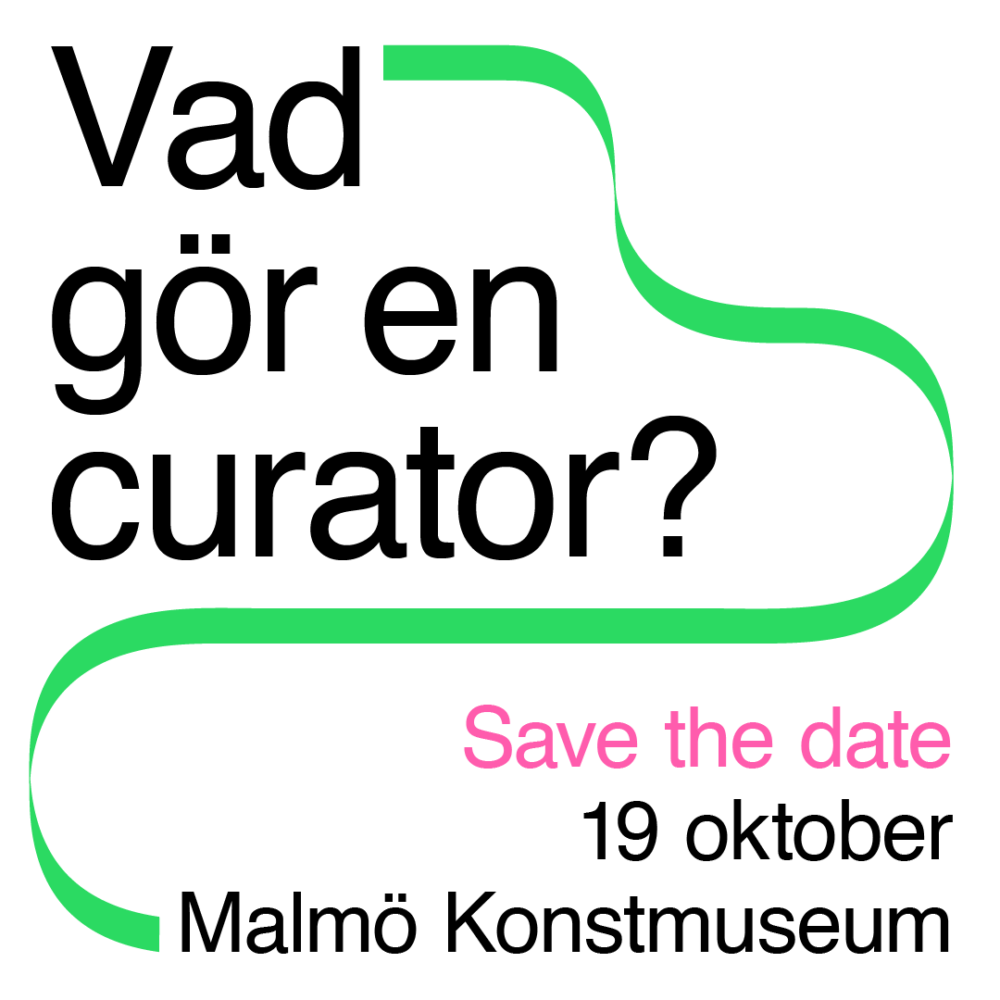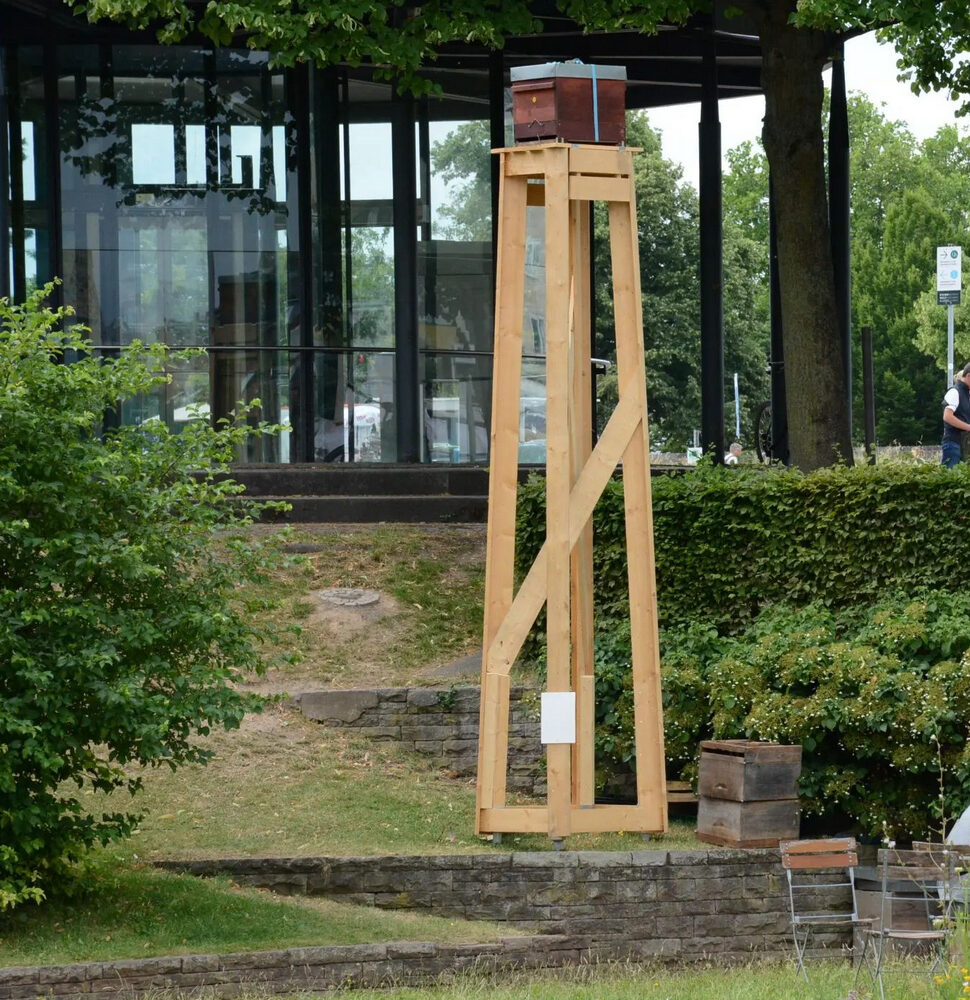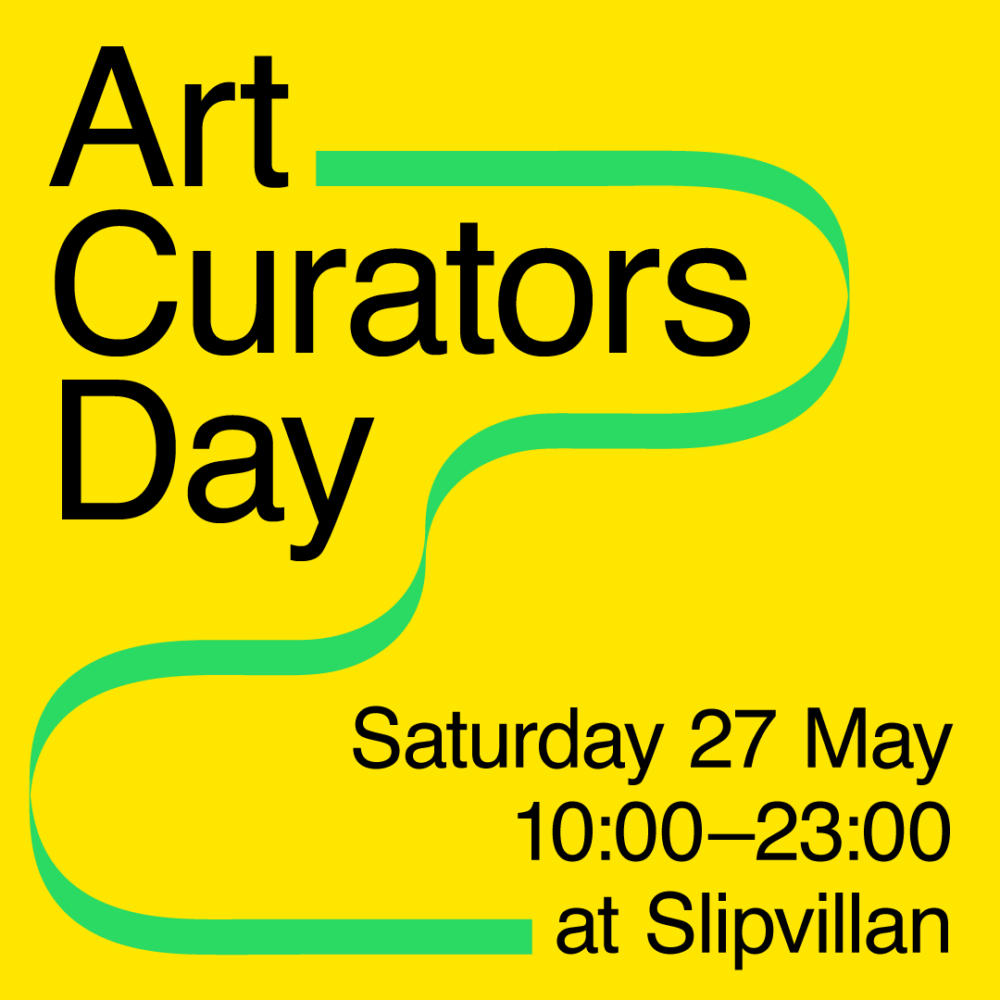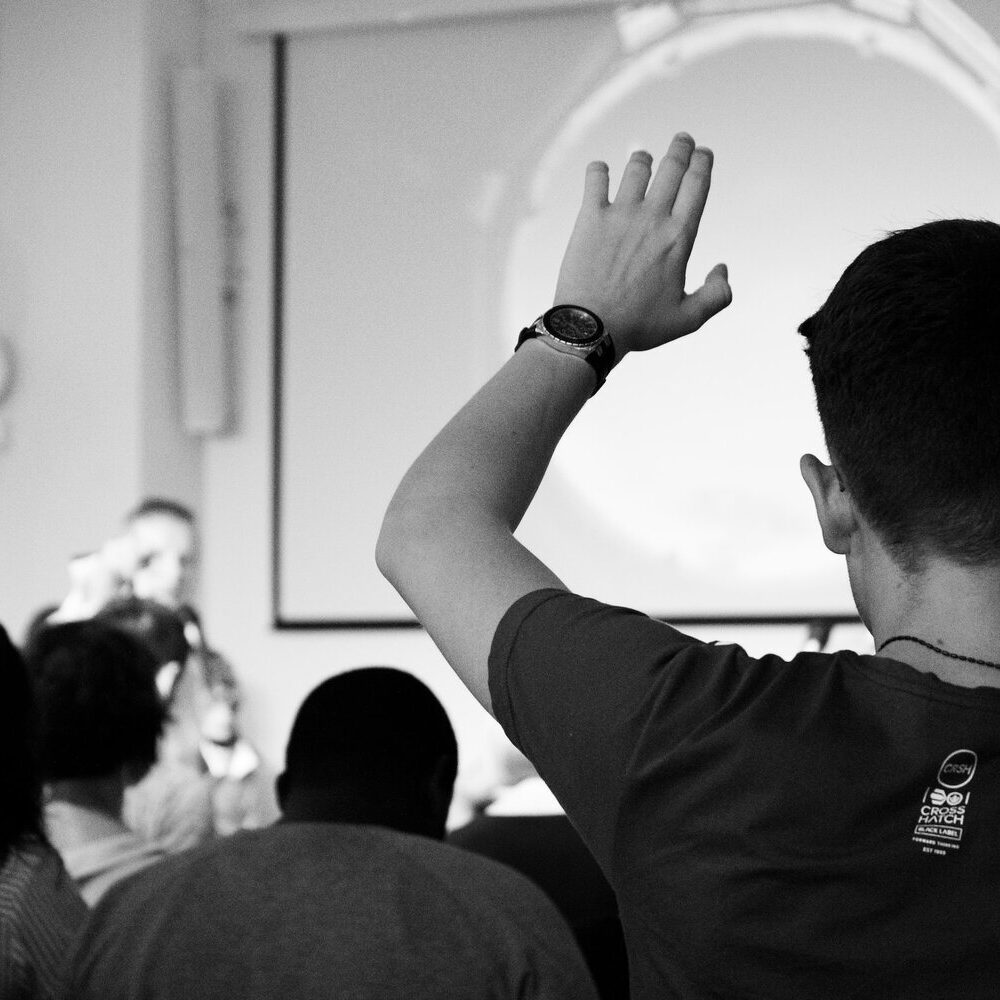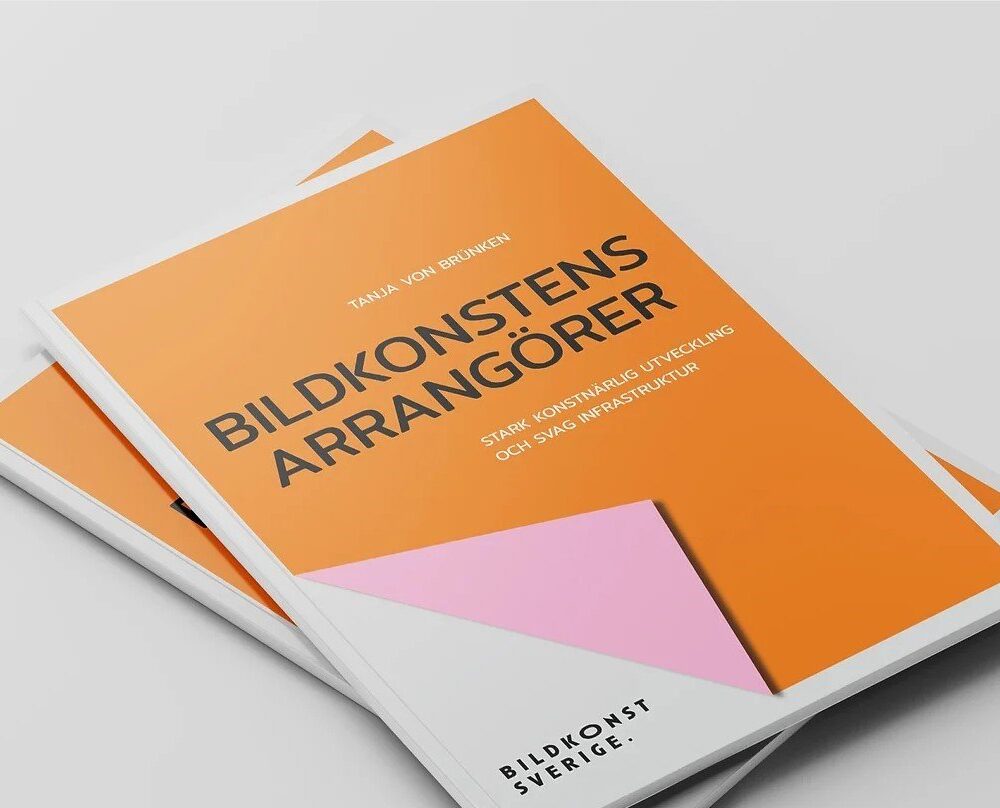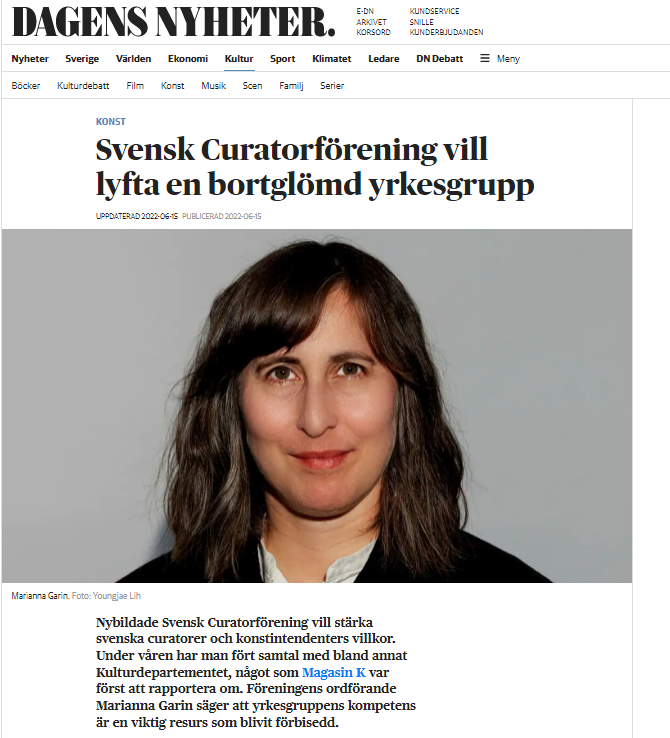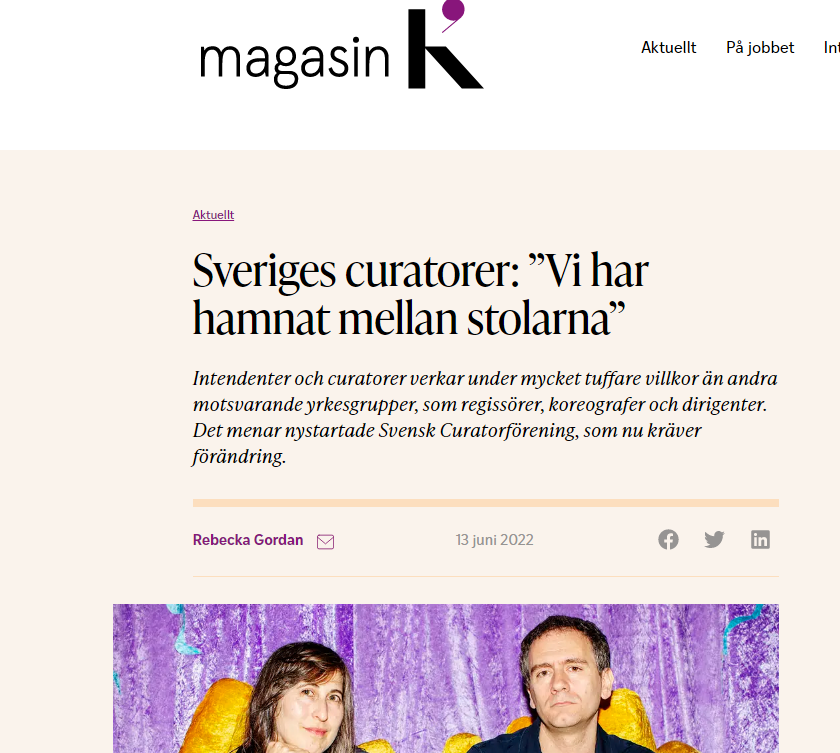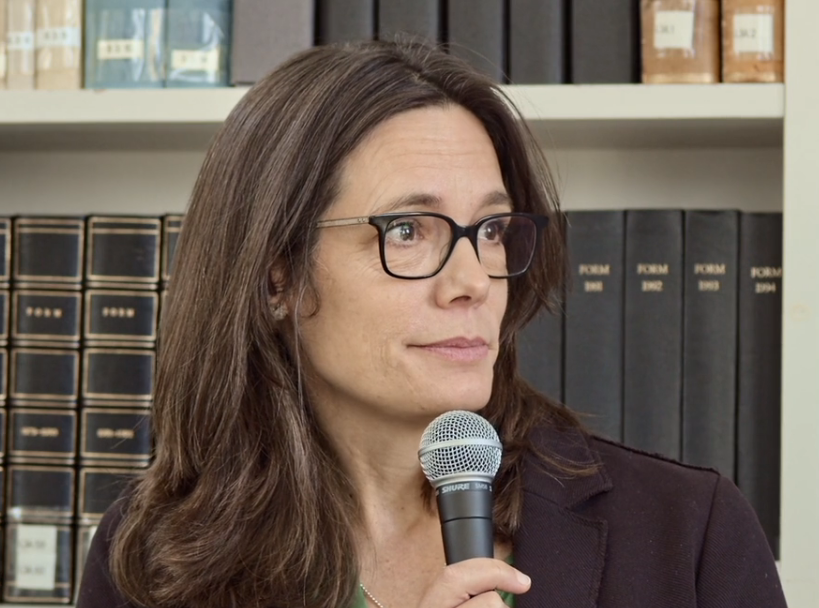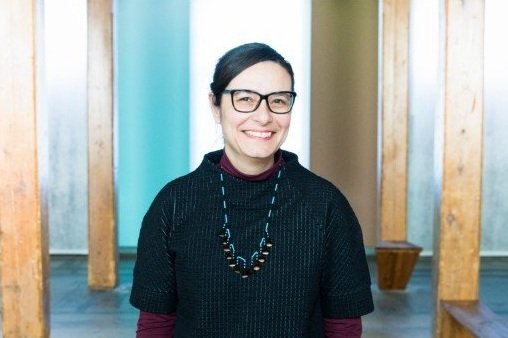On May 9 and 10, the association organized an open symposium at Havremagasinet Länskonsthall in Boden, featuring both national and international curatorial guests. The event included presentations and roundtable discussions that explored working conditions for curators abroad, as well as responses to the Swedish Curators’ Association’s questionnaire regarding the financial situations and working conditions of curators.
On the second day, Professor and Curator Anne Szefer Karlsen from Bergen University, alongside Silja Leifsdotter of the Norwegian Association of Curators, led a workshop titled Dream Contracts for Curators. This workshop delved into the challenges facing curators within the Baltic-Nordic network, focusing on the question: “What does the future hold for curators in the Baltics and Nordics?” Discussions covered new avenues for collaboration, the MU-Agreement (Agreement on Originators’ Rights to Compensation when works are shown, and for Participation in Exhibitions) for curators, and the importance of strengthening the role of curators without compromising the interests of artists or the broader visual arts community. Additionally, participants examined how curators can contribute to the development of art infrastructure and exhibition history within a Swedish context.
This initiative was funded by Kulturstödet support from Region Norrbotten. As part of our long-term efforts to encourage greater inclusivity in the field, the association actively highlighted the vulnerabilities of the profession during the network meetings, workshops, and open talks, emphasizing how social security influences who can pursue a career as a curator today.
As part of our commitment to fostering networking opportunities for curators to discuss professional matters, the all-day event “Art Curators’ Day” was held at Slipvillan on Långholmen in Stockholm. The program featured a diverse range of activities, including panel discussions, workshops, lectures, performances, massage sessions, music, and culinary experiences. This event was a collaborative effort between the association, Kulturhuset Slipvillan, and the MA in Art Curating program at Stockholm University, organised by Sarah Rodrigues as part of her exam project under the guidance of Richard Juhlin, teacher and artistic director at Accelerator in Stockholm.
The newly established Swedish Curators’ Association aims to strengthen the conditions for Swedish curators. During the spring, discussions have been held with, among others, the Ministry of Culture, which Magasin K was the first to report on. The association’s chair, Marianna Garin, states that the expertise of this professional group is an important resource that has been overlooked.
Text: Matilda Källén
Why did you establish the Swedish Curators’ Association?
– An important reason that became evident during the COVID-19 crisis was the acute situation for an already vulnerable professional group. Many lost their assignments at the same time that the crisis support available for various professional groups did not apply to curators. This led to a discussion about the need for a unified voice to advocate for curators’ issues in Sweden.
What issues have you raised with the Ministry of Culture?
– We are engaged in a dialogue focused on the overall development of the art sector. A constructive change in the support framework for culture is necessary, as well as addressing the unfair distribution of grants among different artistic groups. This profession has existed in Sweden for a long time, but the system has not kept pace. However, I sense that there is an interest in these issues. The field of visual arts and design is inherently weakened, and curators can help strengthen the job market in culture by creating exhibition opportunities, both nationally and internationally.
How will you proceed from here?
– We will continue the discussions and highlight the working conditions. Building networks is also important; we are looking at how other curator associations in the Nordic countries, which have been around longer, have operated, and how we can create a more competitive professional community as well.
Curators and art administrators operate under much tougher conditions than other comparable professional groups, such as directors, choreographers, and conductors. This is the view of the newly established Swedish Curators’ Association, which is now demanding change.
An immersive environment greets visitors at Index on Kungsbro Strand in Stockholm. Draperies, plush toys, and sweet ballads fill the exhibition, which disarmingly discusses our relationship with death. In this velvet-clad room, the gallery’s director, Martí Manen, meets with Marianna Garin, a fellow curator who is currently freelancing.
This is the third consecutive day they have met to explain the challenges facing their profession. Earlier in the week, they had discussions with the Ministry of Culture and the trade union DIK. These challenges have become so pronounced that it became necessary to unite: the Swedish Curators’ Association was founded in August of last year.
– During the pandemic, it became clear that we needed a platform, that we needed to organize ourselves. Many lost their assignments, while it was not possible to apply for the support grants that other artistic professions were entitled to at that time, says Marianna Garin, the newly appointed chair of the association.
Prior to the launch, the group held discussions with colleagues in Denmark, Norway, and Finland.
– In the other Nordic countries, curators have had associations for several years. Among other things, they have examined the working conditions for our profession, which is also needed here. We also realized that we needed a voice to engage in conversations with others, says Martí Manen, who also a member of the board.
In Swedish, the titles ‘curator’ and ‘intendent’ are used for the same profession, with the distinction that the intendant works at an institution while the curator is a freelancer. The academic discipline is relatively young; the first program in Sweden, Curator Lab, was launched at Konstfack in 1999. Today, there is also a master’s program, Curating Art, which was established in 2003 at Stockholm University.
Only in 2014 did Statistics Sweden (SCB) begin to register the group as its own occupational category, under the designation Museum Curators, etc. That year, there were just over 1,860 professionals in Sweden. In 2020, the latest figures from SCB indicate that there are nearly 2,300 in this group, marking an increase of 23 percent. Of these, 66 percent are women, a figure that has remained roughly the same since the measurements began.
Since its inception, the Swedish Curator Association has worked to highlight the situation of this professional group. Now, Martí Manen and Marianna Garin assert that it is up to other stakeholders, such as the Ministry of Culture and the Art Grants Committee, to take action.
Over the years, various attempts at organizing have been made. Marianna Garin, who was also involved in that work, believes that the lack of permanent results until last summer was due to the fact that the working conditions were simply too tough at that time.
– When I graduated from Konstfack’s curator program nearly twenty years ago, it wasn’t even possible to apply for project grants from the Swedish Arts Council. The energy quickly drains from a small non-profit organization when there are such limited opportunities to operate, she says.
Today, the Swedish Curators’ Association has nearly one hundred members. The website will soon be launched, which the board hopes will encourage more colleagues to join. Throughout the year, the association has primarily focused on political advocacy, providing responses to the governmental assessments as the ‘Cultural restart investigation’ and holding meetings with, among others, the Ministry of Culture and Art Grants Committee.
The main issue has revolved around what became evident during the pandemic: that the artists they worked with could apply for public support, but the curators themselves could not. It has also been revealed that one problem is that artists, like the directors, choreographers, and conductors with whom curators compare themselves, have copyright for their works. According to the Art Grants Committee’s interpretation, this is a requirement for most artistic support.
– The curatorial work is an artistic endeavor. We argue that copyright is a secondary issue, but we need a technical solution that works for everyone; the current system is not well thought out in relation to the needs of the contemporary art scene, says Martí Manen, who supported by Marianna Garin highlights the urgency of addressing this issues:
– Curators find themselves in a difficult position due to how the Art Grants Committee interprets its mandate and how much the Ministry of Culture can influence that. It is a structural issue where Sweden has not kept pace with developments.
Marianna Garin is a freelance curator who has previously worked for the Swedish Arts Council on public art projects, as well as teaching and writing about art in South America. Martí Manen is the executive director of Index – The Swedish Contemporary Art Foundation, with a background at Bonniers Konsthall, the Swedish Arts Council, and serving as the curator for the Spanish Pavilion at the Venice Biennale.
According to the association, it is not just a functioning support system during crises that is lacking. A range of artistic grants, including the Art Grants Committee working grants, project funding, and travel grants, currently do not cover curators—despite the fact that visual arts represent the largest portion of the agency’s activities, and that directors and choreographers can apply for these grants.
– For the arts sector to be strengthened economically, more long-term cultural policy initiatives are required. Among other things, exhibition organizers and institutions need better conditions to include curators as an integral part of the cultural ecosystem, says Marianna Garin.
The two curators also highlight the fact that public funding supports a crucial part of culture in Sweden, while abroad there is a stronger tradition of private funding that supports the arts.
– The weakened infrastructure in the visual arts sector and the absence of a private sector to rely on mean that we are at the mercy of politicians’ interests, which is reflected throughout the cultural landscape, says Marianna Garin.
What is your most important argument for strengthening your professional group?
– We argue that curators facilitate dialogues between different artists, audiences, and contexts. We can invite other voices to Sweden, as well as contribute to international exhibition opportunities for Swedish artists, says Marianna Garin.
Martí Manen adds:
– Art is a space for dialogue about a complex present, and we are the spider in that ecosystem. If curators cannot receive support for their work, the development of the entire art scene is inhibited.
During the 2022 edition of Folk och Kultur, Chair Mariangela Méndez, along with board members Magdalena Malm (who contributed to the assessment ‘Från Kris till Kraft: Återstart för Kulturen’) and Martí Manen (representing the Klister network), engaged in a discussion with Sara Edström, Chair of KRO – The Artists’ Association of Sweden. The conversation centered on strengthening and developing the visual arts and design sector, as well as exploring prospects for a unified approach.
Moderator: Jon Brunberg, Cultural Politics Strategist and Press Officer at The Artists’ Association of Sweden (KRO).
